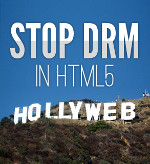Original post: http://moorbey.wordpress.com/2013/04/19/5-disturbing-revelations-from-the-nypd-stop-and-frisk-trial-about-aggressive-racist-policing/
2013/04/19 · by moorbey

The city of New York is in the midst of a landmark class-action lawsuit. The suit, Floyd v. the City of New York, alleges that the NYPD has routinely violated the Constitution by stopping and searching black and Latino New Yorkers based on their skin color. Since Michael Bloomberg became mayor of New York City in 2002, stop-and-frisk increased by 600%, from 100,000 New Yorkers targeted to almost 685,000 in 2011. Nearly 90% of those stopped are black or Latino, and police are more likely to use force while stopping New Yorkers of color.
Grassroots community groups and national civil rights organizations have claimed for years that the NYPD’s aggressive tactics have inflicted too high a price on the “high-crime” areas affected. But the trial, expected to run well into May, has already presented some unbelievable revelations of police misconduct and abuse, with high-profile witnesses, including high-ranking NYPD officers, delivering gut-wrenching and shocking testimony. Here are five revelations from the trial.
1. Police are forced by their superiors to make up (illegal) quotas, encouraged to make bogus stops.
NYPD whistleblowers Pedro Serrano and Adhyl Polanco put their careers on the line when they secretly recorded supervisors demanding officers conduct a set amount of stops (five), summonses (20), and arrests (one) per month. Quotas for NYPD activity are illegal under New York labor law, but the city maintains that “performance standards” or “goals” that do not include punishments for officers who fail to meet them are perfectly legal. According to Polanco and Serrano, “performance standard” is just a euphemism for a quota forcing officers to meet numbers. Sometimes this requires them to break the law.
“We were handcuffing kids for no reason,” Polanco testified about the 41st Precinct in the Bronx. He said that supervisors questioning quantity “will never question the quality.” “They just want to make sure we have them. How we got them, they don’t really care about,” said Polanco.
In one of Polanco’s recordings, a supervisor says, “The goal is at least one arrest per month and 20 summons,” and an officer who fails to meet the quota may become a “Pizza Hut delivery man.”
“Things are not going to get any better. It is going to get a lot worse,” the supervisor says about numbers.
Polanco explained that superiors retaliated against officers who failed to meet or complained about quotas.
“They said, if we were willing to keep working with our partners, we better come up with the numbers; that if we want to ask for days off, we better come up with the numbers; that if we wanted overtime, the chiefs control the overtime, and that if we don’t do our numbers, we are not going to get it. We were told that it was non-negotiable, that they are going to force us to do it if we didn’t do it.”
“They can make your life very miserable,” he said.
2. NYPD cop admits to setting quotas.
Deputy Chief Michael Marino testified that when he became Commanding Officer of the 75th Precinct in 2002, he set “performance goals” or “standards” of 10 summonses and one arrest per month. When the judge asked, “So was there a performance goal of 10 summonses and one arrest?” Marino responded, “As per an administrative guide that was present at the time, I set the standards as was mandated to me by the police department, yes.”
Marino testified that upon entering the 75th Precinct, he learned that, “Surprisingly enough, the 400 or so officers assigned to patrol all saw exactly five summonses every month, no more, no less,” adding that “It told me that they had set their own quota.”
Marino testified that he did an analysis of crime conditions in the area and then, “I asked them to increase their summons production from five to 10. I asked them to try to make two good stops a month and to attempt to make one arrest a month.“
Still, he denied ever punishing officers solely for failing to meet his numbers.
3. Spinning evidence.
In 2007, the NYPD’s Office of Management Analysis and Planning (OMAP) commissioned a study by the RAND Corporation to determine whether the department’s stop-and-frisk tactic was driven by racial bias.
Given that close to 90% of police encounters involved non-whites, the report asked, “Do these statistics point to racial bias in police officers’ decisions to stop particular pedestrians? Do they indicate that officers are particularly intrusive when stopping nonwhites?”
In a summary of the report’s findings, RAND found, “small racial differences in these rates” based on which they made “communication, recordkeeping, and training recommendations to the NYPD for improving police-pedestrian interactions.”
That was the final report. But testimony at Thursday’s stop-and-frisk trial suggests that the NYPD pressured the reports’ authors to soften some of their original language. The project’s coordinator, Terry Riley, testified that in their contract the RAND Corporation agreed to take the NYPD’s concerns “into consideration.” The NYPD did indeed voice concerns about early drafts of the report, which plaintiffs say led to several alterations to the final product.
In the first draft, the report’s authors wrote of “disturbing evidence” that there was unequal treatment across race groups. After the NYPD objected to the language, that section was rewritten to say that there was “some evidence” of this. In another version of the report, they originally asked whether every stop that uncovered wrongdoing was worth stopping nine “innocent pedestrians.” The department apparently found the language offensive, and it was changed to “suspects who committed no crime.”
Darius Charney from the Center for Constitutional Rights,an attorney representing the plaintiffs, claims that the evidence they presented of emails complaining about these aspects of the report, and subsequent changes, show that the NYPD “clearly had a hand in spinning the results” even if they didn’t doctor the data.
4. Searching groins and socks…for guns?
Stop-and-frisk is supposed to get guns off the streets. Yet officers allegedly search areas where a gun cannot be reasonably hidden, and these searches are often the most invasive and humiliating.
There have been widespread allegations that NYPD frisks and searches go too far. As I recently reported, people have complained that police search their genital areas and buttocks for drugs, even though police are only allowed to search an area where they have observed a bulge and need to confirm it’s not a weapon.
A plaintiff in the case, 24-year-old Nicholas Peart, testified that, on two separate stops, officers searched him inappropriately. One day police demanded he and some relatives get down on the ground. He broke down when he described what happened next.
“They patted over my basketball shorts and I was touched,” he said, adding that they felt his groin.
In April 2011 Peart was on his way to pick up milk for his siblings. A police officer handcuffed him, removed his shoes and felt his socks, asking “if I had weed on me,” he said.
Queens College sociologist Harry Levine, an expert on stop-and-frisk, has linked the NYPD’s astonishing marijuana arrest rate to its use of stop-and-frisk. The NYPD arrests about 50,000 people annually for marijuana, the vast majority of them black or Latino and in the same neighborhoods where stop-and-frisk is prevalent. It’s telling that in 2012, after controversy surrounding stop-and-frisk heated up, both the policing tactic and marijuana arrests dropped by the same amount — 22% percent.
5) NY Senator: NYPD Commissioner told me stop-and-frisk is a fear tactic.
New York Senator Eric Adams (D-20th District) testified on April 1 that at a July 2010 meeting with Governor Andrew Cuomo about a bill (which he co-sponsored) to ban a database of persons stopped but not charged, he raised his concern about the “disproportionate” number of young black and Latino men stopped by police, prompting the Commissioner to say the tactic is crucial for controversial reasons. “[Commissioner Kelly] stated that he targeted or focused on that group because he wanted to instill fear in them, every time they leave their home, they could be stopped by the police,” Adams testified.
“I told him that I believe it was illegal and that that was not what stop-and-frisk was supposed to be used for,” he testified, adding that Kelly responded by asking, “How else are we going to get rid of guns?”
Adams later told reporters he considered Kelly’s statement evidence that, “It was not the people on the ground,” provoking illegal stops but “a policy being blessed from the top down.”
Related articles
- Court Hears Tapes Of NYPD Bosses Allegedly Explaining Stop-And-Frisk Quotas (manhattan.ny1.com)




 Moorbey'z Blog
Moorbey'z Blog Nikola Tesla on PBS
Nikola Tesla on PBS

